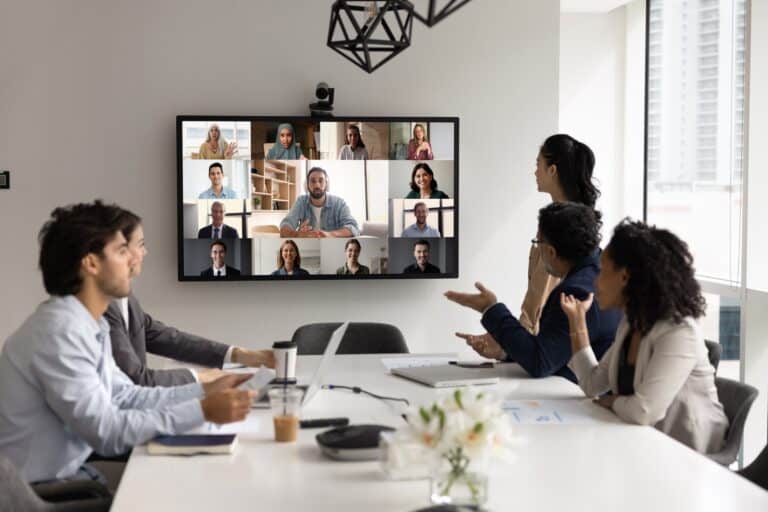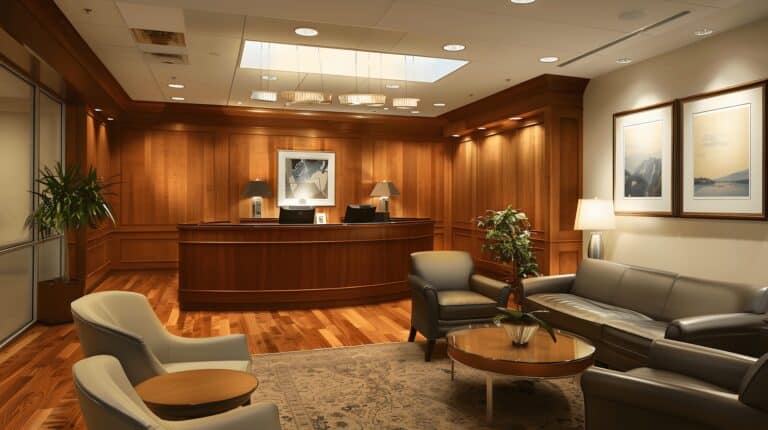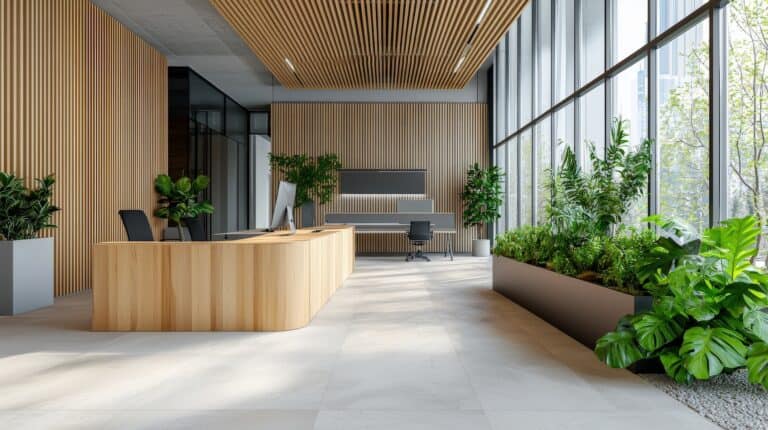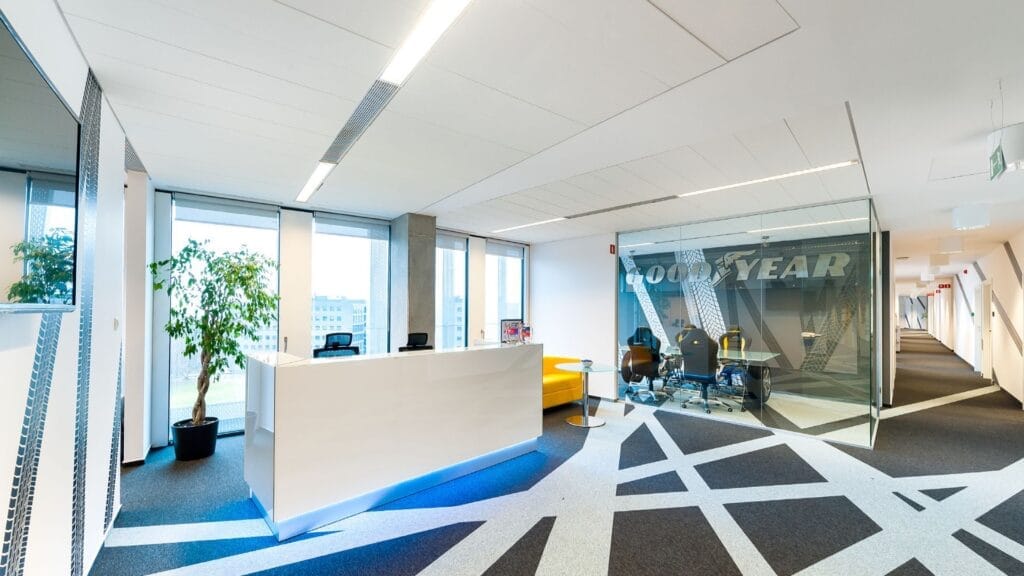Hybrid working is now a permanent feature of modern business. With employees dividing their time between home and the office, organisations are rethinking how their workspaces support collaboration, productivity, and wellbeing.
But hybrid success doesn’t happen by accident. To get the most out of your people and your space, your office design needs to work harder than ever.
In this guide, we’ll explore what hybrid teams actually need, the key design principles behind flexible workspaces, and how to future-proof your office for a hybrid workforce – all grounded in our hands-on experience delivering smart, scalable solutions for forward-thinking clients.

Why Office Design Matters for Hybrid Teams
Hybrid working combines remote and in-office work, offering employees greater flexibility and autonomy. But it also brings new challenges for facilities teams and business leaders:
- Underused space on quieter office days
- Limited collaboration areas when teams do come in
- Technology gaps that frustrate hybrid meetings
- Disconnection between remote and in-office staff
An effective office design can resolve these issues by making the space work harder – supporting a wide range of working styles and fostering team cohesion.
Want to see how workplace design is evolving? Read our Office Fit-Out Trends for 2025 for insight into what the modern office needs.
What Do Hybrid Teams Actually Need?
Before redesigning your workspace, it’s important to understand what your hybrid team truly needs to thrive.
Flexibility
With people working on different schedules, flexibility is vital. The office must support:
- Varying occupancy levels
- Drop-in use of desks and meeting rooms
- Dynamic zoning for different activities
Collaboration
In-person time is valuable. Your layout should prioritise:
- Team zones for projects
- Casual meeting areas
- Video-enabled spaces for hybrid collaboration
Focus & Wellbeing
Staff still need quiet, comfortable spaces for concentration – as well as areas to relax and recharge.
Inclusivity
Hybrid design should support equity, ensuring remote and in-office staff have equal access to tools and information.
6 Office Design Principles for Hybrid Workplaces
At Corporate Interiors, we use the following design principles when planning and delivering hybrid-ready office fit-outs:
1. Flexible Layouts That Adapt With You
The days of fixed desks and rigid space plans are over. Hybrid offices thrive on flexibility. That means:
- Modular furniture that can be rearranged easily
- Mobile partitions to reshape space on demand
- Multi-use areas that serve as meeting rooms, breakout zones or hot desks
Our Affordable Office Fit-Outs for Small Businesses article shares smart solutions for creating flexibility on a budget.
2. Agile Zones for Collaboration and Focus
Designing for hybrid means creating distinct zones for different work modes:
- Collaboration Zones
- Project tables with integrated power/data
- High tables with stools for stand-up meetings
- Writable walls or digital whiteboards
- Focus Zones
- Acoustic pods or booths
- Quiet corners with soft seating
- Screened desks for uninterrupted work
Zoning helps employees find the right environment for their task – no matter how they work best.
3. Technology That Bridges the Gap
Hybrid teams rely on digital tools to connect remote and office-based colleagues. Your office should:
- Equip rooms with video conferencing screens and cameras
- Use acoustic panels to reduce echo in calls
- Provide charging stations and universal docks at hot desks
Need help choosing the right setup? Our team can design and install AV systems tailored to your space.
4. Smart Desk Sharing & Hot Desking
Permanent desks are no longer efficient in hybrid workplaces. Embrace desk sharing with:
- Clearly signed hot desk areas
- Integrated booking software
- Personal storage lockers or mobile pedestals
For larger teams, a 6:10 desk ratio (6 desks for every 10 employees) is a good place to start.
5. Wellbeing-Centric Design
Hybrid working can be isolating. The office should provide a positive, social, and restorative environment:
- Biophilic features like indoor plants and natural light
- Quiet wellness rooms or reflection spaces
- Comfortable lounges and kitchens
6. Inclusive Design for All Staff
Hybrid workplaces must be inclusive by design. This means:
- Step-free access and accessible desks
- Consideration for neurodiverse employees (e.g. quiet spaces, minimal sensory stimulation)
- Equality of experience for in-person and remote staff
For more on how thoughtful design improves retention and wellbeing, see our article: How Office Design Affects Employee Retention

Cultural Considerations in Hybrid Workplace Design
Beyond the physical space, hybrid design needs to support your company culture:
- Belonging: Ensure staff feel connected and supported no matter where they work
- Trust: Use open layouts to encourage visibility and collaboration
- Autonomy: Give staff choice over how and where they work
Involving your team in the planning process helps build engagement and ensures the space reflects how people really work.
Real-World Hybrid Design Ideas
Here are a few design ideas that Corporate Interiors has implemented in recent projects:
- Dual-purpose rooms: Meeting rooms that double as focus pods with sliding acoustic panels
- Landing zones: Touchdown areas for quick visits or remote check-ins
- Neighbourhoods: Team-based desk clusters with shared storage and breakout spaces
- Acoustic zoning: Differentiated soundscapes using flooring and ceiling materials
Want to explore more ideas? Contact us for a free consultation or workspace audit.
FAQs About Hybrid Office Design
How much space do you need per person in a hybrid office?
This depends on your occupancy model, but aim for 6–8 sqm per person on average, with flexible desk sharing.
How do you manage meeting room access in hybrid teams?
Use digital booking tools and consider adding smaller, private pods to reduce bottlenecks.
Can small businesses implement hybrid design?
Absolutely. Many hybrid design principles – like modular furniture and open zoning – are scalable for SMEs.
How Corporate Interiors Can Help
At Corporate Interiors, we understand that no two hybrid workplaces are the same. That’s why we offer:
- Workplace strategy consultations
- Space planning and 3D visualisation
- Furniture specification and installation
- Partitioning, acoustic treatment and AV integration
- Full turnkey fit-out services
Whether you’re redesigning a single office or transforming your entire workspace strategy, we help you create a hybrid environment that works for your people, your brand, and your business goals.
Explore our Office Interiors & Fit-Out Services to learn more.
Final Thoughts
Hybrid work is about more than flexibility – it’s about designing intentionally to support productivity, connection, and wellbeing. With the right strategy, your office can become a hub for collaboration and innovation, even when your team isn’t there full time.
Looking to redesign your office for hybrid working? Get in touch with our team of experts to start the conversation.




